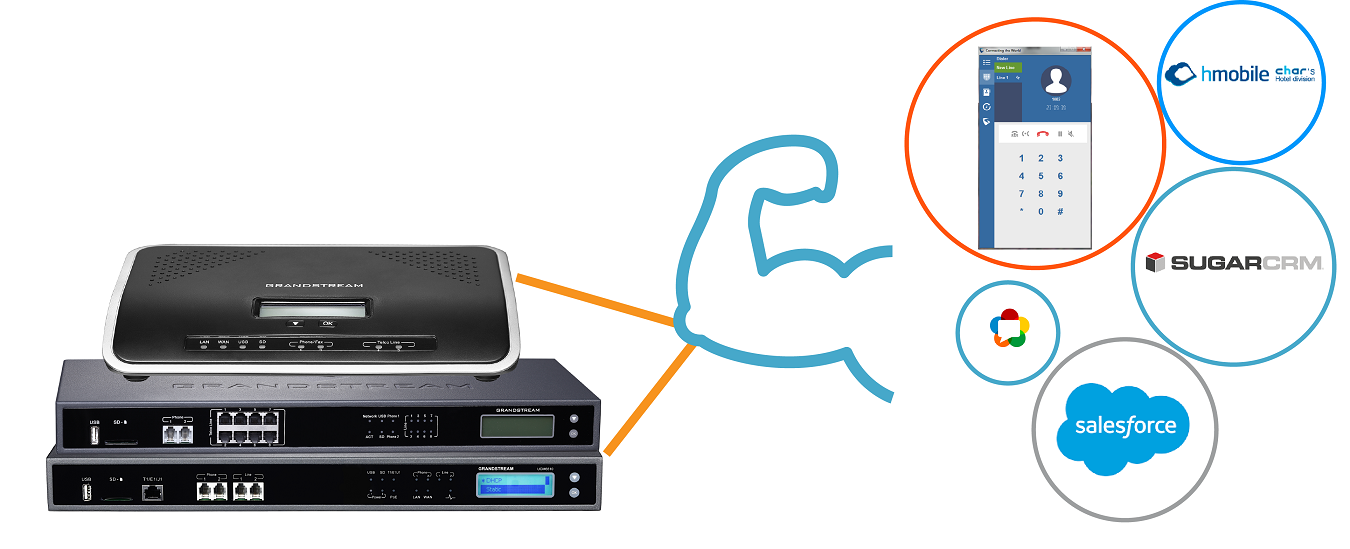The most recent FCC Voice Telephone Services report, published in November 2016, states that two thirds of businesses in the United States are still using switched access telephone lines (PSTN or POTS). The reasons they haven’t yet migrated to VoIP (voice over internet protocol) are varied. One of the most prevalent myths about VoIP is that the quality is not as good or reliable as that of traditional telephone lines. The truth, however, is that VoIP technology has evolved to a point where the audio quality is generally as good if not better than analog lines.
Here we list some of the technological developments that have allowed VoIP to surpass even PSTN voice quality, some of which may surprise you!
Read More
Topics:
QoS,
Business Telephone System,
VoIP,
Trends
By Colleen Schmidt, Director of Partner Success, CoreDial
Risk is something that we fear because it requires us to put ourselves out there to achieve something greater. There is always a chance you could lose something important to you, especially if you take a risk on a venture or idea you know little about or have not adequately prepared for. The same is true when it comes to taking risks for your business. As much as we would like to mitigate business risks, the fact is they are an integral part of the growth process for any business. Just ask these business risk takers: Ben Silbermann, the creator of Pinterest, risked everything by leaving a job at Google to create the virtual pinboard site. Ben would survive early disappointments and now presides over a company worth $1 billion. Or Drew Houston of DropBox, who held to his guns when Apple Founder Steve Jobs told him to join Apple or be taken over in the market and now enjoys running a $1 billion company.
For VARs, MSPs and other resellers, your risks may not be the same as the ones mentioned above, but embracing the trends in the industry is the key to long-term success. For the unified communications (UC) industry, taking a risk on hosted and cloud-based services, as well as having a technology partner you can trust, will ensure your business stays economically solvent over time and is ready to meet the changing needs of your customers. Ignoring the shifting tides in the industry will lessen the options you can bring to the table for your customers, which will eventually impact your bottom line.
Read More
Topics:
Customer Service,
Business Telephone System,
VoIP,
Total Voice Solution,
Trends,
Cloud
Sneak preview of new enhancements coming later this year
By Kate Clavet, Marketing Specialist, Grandstream Networks
It’s becoming imperative for any business to have tools available that not only enhance their internal communication but also keep their customers coming back. With so little face time (thanks to the internet), a customer’s experience is increasingly important. Grandstream’s UCM IP PBX series is a practical way to manage your communication without compromising on features or emptying your wallet. After all, we’re always striving to improve our customer’s experience and, by extension, yours.
To maintain a high level of service, there must be tools in place that highlight efficiency and collect data so that customer service, lead follow-up, etc. can be measured. Without metrics and data for evaluation, maintaining a positive customer experience is nearly impossible. Grandstream wants to make that easier for you. In the second and third quarters of 2017, a lot of enhancements are coming your way.
Read More
Topics:
Customer Service,
IP PBX,
VoIP,
Grandstream,
Software Integration,
Trends,
Productivity
Voice over IP networks can be challenging to implement efficiently and securely. This is in part because voice packets require specialized management and must be treated differently than normal data packets. Quality of Service (QoS), security and flow control are just some areas in which the required handling of voice traffic differs from conventional data traffic.
The good thing is that with the proper expertise and care, many of these issues can be successfully dealt with within the corporate network. Such networks are under the complete control of the network administration team and thus can be fully customized for the needs of the voice being transmitted.
However, what happens when voice packets are routed beyond the corporate network, either for voice calls to the PSTN or mobile network, or for employees who use internal voice network services remotely? Here we look at various network edge mechanisms that can be used to monitor and manage data traveling in and out of the LAN.
Read More
Topics:
QoS,
VoIP,
Total Voice Solution,
Trends,
Network Security,
Network Design
The upgraded phone line takes the stack of advanced features even higher.
By Yingting Li, IP Phones Product Manager at Yealink
With the T4 series of IP phones, Yealink offers a well-rounded array of sophisticated calling features, state-of-the-art voice quality, easy installation, robust customization options and extensive expandability. Early in December 2016, Yealink released the upgraded T4S models based on the former T4 series in the North America region. The T4S models build on the user experience even more with a number of upgrades.
Read More
Topics:
SIP Phones,
VoIP,
SIP,
Yealink,
Product Review
When most people hear about VoIP, they think of telephony over the internet. Online services that offer extremely-low-cost phone calls or even free calls may come to mind. Although such services do utilize VoIP (voice over internet protocol), IP telephony in a broader sense is technology and architecture that uses VoIP to allow you to create an internal telephone network within your organization that leverages the existing data network infrastructure.
IP telephony operates on converged network, which supports both voice and data. The advantages of this to a business are numerous and are well worth the investment. If you are considering a migration to IP telephony, here we present some information that can help get you on track.
Read More
Topics:
Business Telephone System,
VoIP,
SIP,
Trends,
Productivity
As one of the biggest expenses of any business, telecommunications solutions should be both reliable and cost-effective. One telephony network design aspect that can provide both is the direct connection of the IP phone system to a mobile network.
Here we explore two ways to do this, either of which not only achieves cost savings for the company but also enhances reliability by providing an additional redundant and overflow route.
Read More
Topics:
Business Telephone System,
VoIP,
SIP,
Total Voice Solution,
Business Continuity,
Mobile
If you deal with Voice over IP (VoIP), you must have come across this scenario at one time or another: A user complains that when they answer their phone, the caller can’t hear them, even though they can hear the calling party. Or, it may be that neither party can hear the other and there is just silence on the line.
This is the classic case of one-way or no-way audio, where a voice call is successfully completed, but either the voice packets only successfully travel in one direction, or neither end successfully receives voice packets. It may be difficult to understand why this happens, especially since the phone does ring, both physically for the called party and via the ring-back tone for the calling party. It seems counterintuitive that the transmission of voice packets could be unsuccessful if the call was successfully set up.
This is a scenario that comes up a lot on our tech support calls at TeleDynamics. Here we list four of the most common culprits of this issue and suggestions for how to tackle them.
Read More
Topics:
SIP Phones,
QoS,
VoIP,
SIP,
Troubleshooting
Grandstream and Ubiquiti add excitement to desk phones by leveraging the power of Android OS and a modern interface. By integrating the Android Operating System into the phone, thousands of business productivity applications like Skype, GoToMeeting, Gmail and more can be downloaded onto these phones from the Google Play store.
Advanced apps ranging from Pomodoro Technique Timer to more obvious solutions provided by Google Calendar will make workers in any industry more productive as they perform phone call campaigns and meetings with one device instead of two. The versatility that the Android platform provides is a huge differentiator that separates these phones from a typical IP phone.
Here we look at five SIP endpoints from Grandstream and Ubiquiti that use Android OS.
Read More
Topics:
SIP Phones,
Business Telephone System,
VoIP,
SIP,
Grandstream,
Android,
Productivity
By Nathan Miloszewski, on behalf of Yeastar
When it comes to VoIP PBX systems, channel partners need to determine whether an on-premise solution or a cloud-based service is best suited for their customer.
Each solution has its strengths. For the instances in which you determine that an onsite IP PBX is the best option for your customer, we’ve put together these guidelines to help you sell against the hosted solutions offered by your competitors. Here at Yeastar, we work with thousands of channel partners who find themselves in competition with cloud-based VoIP service providers and have identified the most compelling arguments for an on-premise solution. Think of each one as an additional arrow in your sales quiver.
Read More
Topics:
Customer Service,
IP PBX,
Business Telephone System,
VoIP,
Total Voice Solution

















